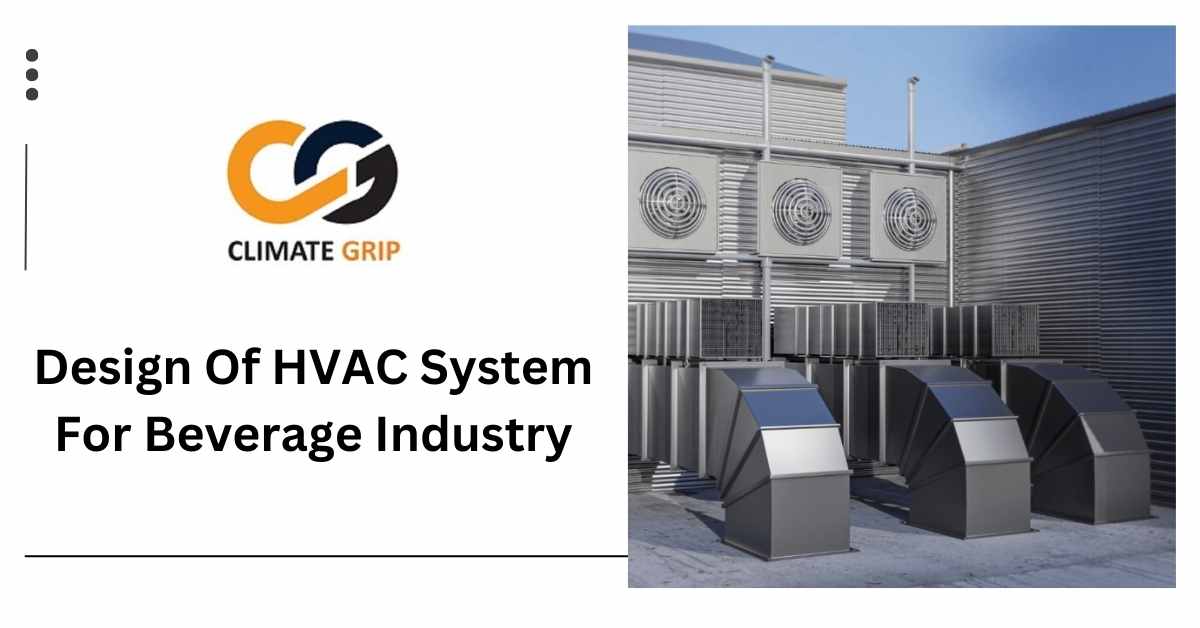The beverage industry is a dynamic and fast-paced sector that relies heavily on precise temperature control to maintain product quality and safety throughout the manufacturing process. The design of HVAC (Heating, Ventilation, and Air Conditioning) systems plays a critical role in ensuring optimal production conditions. This article explores the intricacies of designing HVAC systems specifically tailored to the unique requirements of the beverage industry, focusing on factors such as temperature control, humidity management, energy efficiency, and regulatory compliance.
Understanding the Beverage Industry’s HVAC Needs
In the beverage industry, maintaining consistent temperatures is essential for preserving product integrity and meeting quality standards. Whether it’s brewing beer, fermenting wine, or bottling soft drinks, each stage of the production process demands precise temperature control to achieve desired outcomes. Additionally, controlling humidity levels is crucial for preventing moisture-related issues such as condensation, mold growth, and spoilage, which can compromise product quality and pose health risks.
Design Considerations for HVAC Systems
When designing HVAC systems for the beverage industry, several factors must be taken into account to ensure optimal performance and efficiency:
- Temperature Control: The HVAC system must be capable of maintaining specific temperature ranges tailored to the needs of each production stage. For example, brewing and fermentation processes often require different temperature profiles, necessitating flexible control systems that can adapt to varying requirements.
- Humidity Management: Controlling humidity levels is essential for preventing moisture-related problems and maintaining product quality. High humidity can lead to condensation on equipment surfaces, which can promote microbial growth and corrosion. Conversely, low humidity levels can cause product dehydration and affect taste and texture.
- Air Quality: Maintaining clean air is critical for ensuring product safety and meeting regulatory standards. HVAC systems should incorporate air filtration and purification technologies to remove contaminants such as dust, particles, and microorganisms that could compromise product quality or pose health risks to consumers.
- Energy Efficiency: Given the energy-intensive nature of HVAC systems, optimizing energy efficiency is paramount to reduce operational costs and minimize environmental impact. Strategies such as variable-speed drives, energy recovery systems, and advanced control algorithms can help improve energy efficiency without sacrificing performance.
- Regulatory Compliance: The beverage industry is subject to stringent regulations and standards governing food safety, hygiene, and environmental sustainability. HVAC systems must comply with relevant regulations, such as FDA (Food and Drug Administration) guidelines, HACCP (Hazard Analysis and Critical Control Points) principles, and LEED (Leadership in Energy and Environmental Design) certification requirements.
Case Study: Designing an HVAC System for a Brewery
To illustrate the practical application of HVAC design principles in the beverage industry, let’s consider the example of designing an HVAC system for a craft brewery:
- Needs Assessment: The first step is to assess the brewery’s specific requirements, considering factors such as production volume, process flow, space constraints, and environmental conditions.
- System Sizing: Based on the needs assessment, the HVAC system is sized to deliver the required heating, cooling, and ventilation capacity, taking into account factors such as building insulation, equipment heat loads, and occupancy levels.
- Equipment Selection: The selection of HVAC equipment is critical to ensure reliability, performance, and energy efficiency. Factors to consider include the type of heating and cooling equipment, air distribution systems, control technologies, and integration with process equipment.
- Control System Design: A sophisticated control system is essential for monitoring and regulating temperature, humidity, and air quality parameters in real-time. Advanced control algorithms and sensors enable precise adjustment of HVAC system operation to optimize performance and energy consumption.
- Commissioning and Maintenance: Proper commissioning and ongoing maintenance are essential to ensure the HVAC system operates reliably and efficiently over its lifecycle. Regular inspections, filter replacements, and calibration of sensors and controls help prevent downtime and maintain product quality.
Conclusion
Designing HVAC systems for the beverage industry requires careful consideration of various factors, including temperature control, humidity management, energy efficiency, and regulatory compliance. By understanding the specific needs of beverage production processes and implementing tailored HVAC solutions, manufacturers can enhance product quality, ensure compliance with industry standards, and optimize operational efficiency. As the beverage industry continues to evolve, innovative HVAC technologies and strategies will play an increasingly important role in meeting the demands of a competitive market while maintaining the highest standards of quality and safety.

